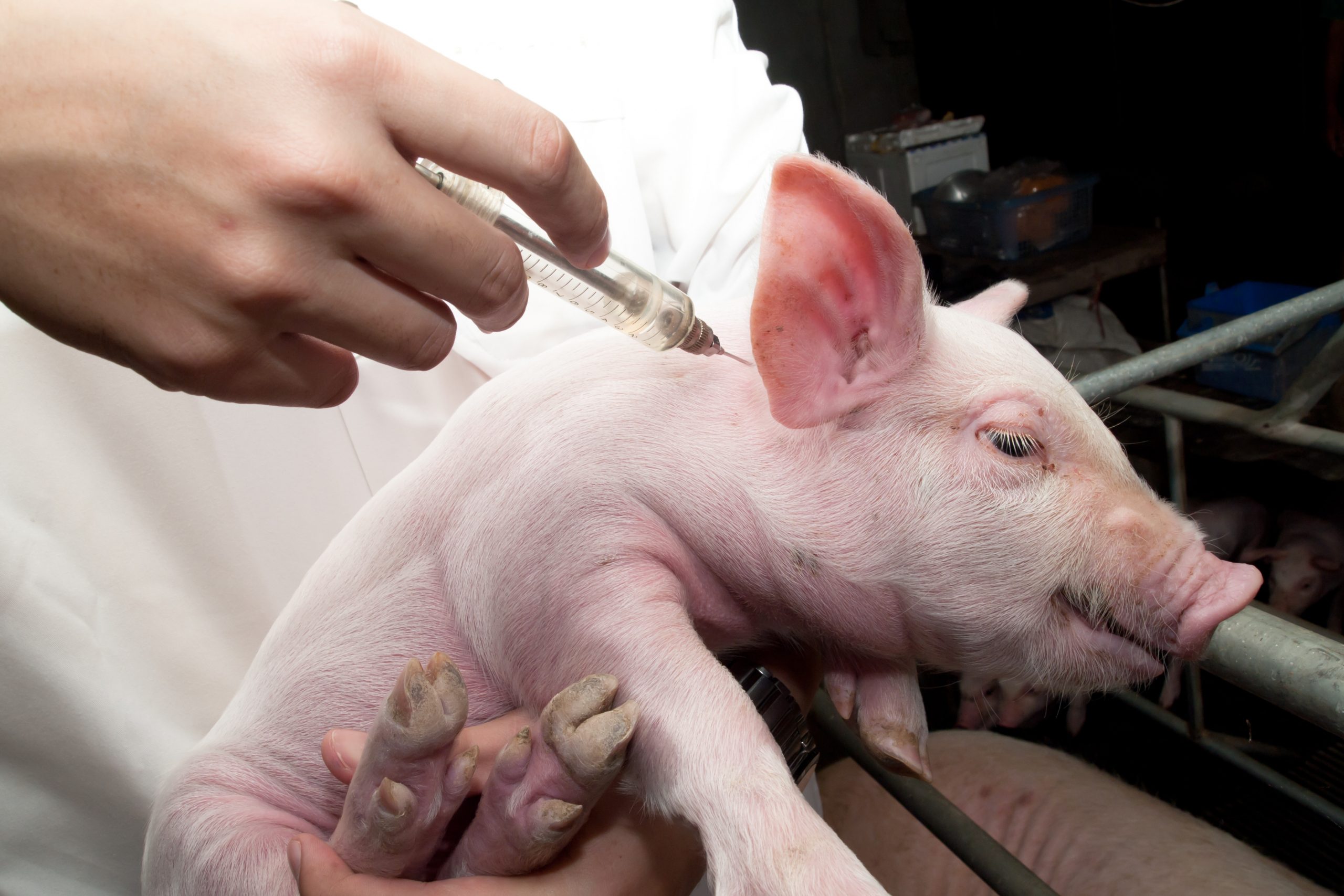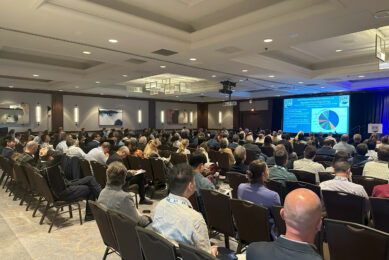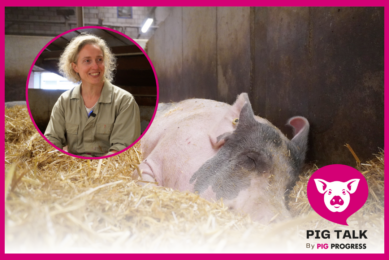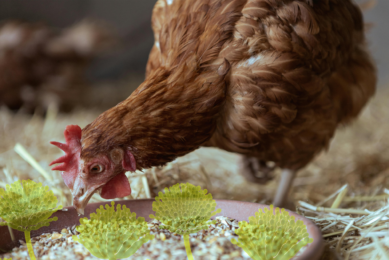Mycotoxins: A threat to pig vaccination

Pigs are particularly exposed to mycotoxins due to their cereal-rich diet. These mycotoxins can impact the pig’s health in different ways. Different mechanisms of the pig immune response can be affected, which may increase the susceptibility to infectious diseases, but also compromise the vaccination status of the animals.
Mycotoxins are toxic metabolites produced in the course of fungal infection of crops, especially cereals. They can be produced in fields or during storage. These frequent contaminants of food and feed can induce many health challenges. To date, only a few mycotoxins are monitored in Europe. Only aflatoxins (AFs) are regulated and some recommendations have been implemented for fumonisins B (FBs), zearalenone (ZEN), trichothecenes (mainly deoxynivalenol (DON), T-2 and HT-2 toxins), and ochratoxin A (OTA), as these mycotoxins are commonly found in feed. Mycotoxins interact with the immune system, resulting in either immunostimulation or immuno-suppression. This may have consequences for animals, for which the industry relies on an elective vaccination programme for disease prevention.
How does the immune system work?
In pigs as in other mammals, various cells interact with one another to induce an immune response that aims at protecting the organism against any disruption of its integrity, or against microbial pathogens. 2 different mechanisms are involved in the immune response. The first one is the innate immune response that is a very fast (active in less than 12 hours) and non-specific response, present since birth and primarily linked to inflammation. This mechanism leads to the activation of phagocytes which in turn secrete active metabolites of oxygen and nitrogen targeting the invading pathogens, and many other metabolites or molecules involved in the recruitment and the activation of other cells. The innate immunity provides a first line of defence against many common micro-organisms, and is essential for the control of common microbial infections.
In the course of infection, some activated phagocytes can mature into antigen-presenting cells that are able to activate pathogen-specific lymphocytes, giving rise to a second mechanism of immune response known as the adaptative or acquired immune response. This mechanism is characterised by a delayed specific response that occurs after a second contact with a foreign antigen. The lymphocytes involved in the mechanism proliferate and generate effector cells as well as an immunological memory. Effector lymphocytes function to eliminate the pathogen, either by releasing antibodies (B lymphocytes), cytotoxic granules (cytotoxic T lymphocytes) or by signalling to other cells of the immune system (helper T lymphocytes). Effector cells have a limited life-span. However, some persist after the pathogen has been cleared, and form the basis of an immunological memory that ensures a more rapid and effective protection on a second encounter with the pathogen. This immunological memory is capitalised on through vaccination to prevent a number of pathogenic challenges of viral and bacterial origins that usually affect pig health and performance. Among the swine diseases commonly addressed through vaccination are haemolytic diarrhoea caused by Escherichia coli, erysipelas, pneumonia caused by Mycoplasma hyopneumoniae, as well as porcine reproductive and respiratory syndrome virus (PRRSV) disease.
Affect on pig immune response
Many publications have emphasised the detrimental effects of mycotoxin exposure for swine immunity. These effects encompass the innate immune response as well as the humoral and cellular components of the adaptative immune response. The aflatoxin-induced alteration of the pig inflammatory response is now well established. Feeding low doses of AF for four weeks to weanling piglets disturbed the inflammatory cytokine balance by decreasing the production of the pro-inflammatory IL-1ß and TNF-α cytokines and increasing the production of the anti-inflammatory IL-10 cytokine. Also, blood phagocytes isolated from piglets of sows fed an AF-contaminated diet failed to efficiently produce active metabolites of oxygen and showed a reduced chemotactic response to a chemoattractant bacterial factor. Likewise, the in vitro exposure of swine alveolar macrophages to aflatoxin led to a reduction of their phagocytic ability and a decrease of their viability. Similar observations were made with the Fusarium toxin FB1, while a decreased number and phagocytic activity of macrophages was reported in gilts fed an OTA-contaminated diet.
Mycotoxins also act on the pig humoral immune response. Ingestion of trichothecene mycotoxins DON or T-2 toxin induced an increase of plasma total IgA concentration of animals experimentally challenged with ovalbumin A, while the IgG and the IgM titres decreased or were not influenced. In contrast, pig exposure to AFs or FBs had very limited effect on humoral immunity, with unchanged plasma concentrations of total IgA, IgG and IgM and the specific anti-ovalbumin IgG. Regarding the cellular immune response, FB1, in contrast to AFs, is known to modify the helper T lymphocytes cytokine balance in pig. However, following sow exposure to AFs, the piglets global lymphoproliferative response upon mitogenic stimulation was reduced, indicating that developing piglets may be particularly susceptible to AFs.
Summing up, mycotoxins negatively affect both the innate and adaptative immunity of pigs. They impair the inflammatory cytokine balance as well as the chemotactic and phagocytic activities of macrophages. They may also target the humoral and cell-mediated response to antigens. The alteration of the antigen-presentation, the B and/or T lymphocyte proliferation, or the cytokine balance might explain the failure in proper immunisation following swine vaccination (Figure 1).
Figure 1 – Putative mechanisms for the impaired vaccine response in pigs exposed to mycotoxins.

Vaccinal response to mycotoxin exposure
The pig vaccinal response is altered at mycotoxin doses that are lower than the one needed to alter the global immune response, and almost all the main classes of mycotoxins have been shown to compromise vaccination. For example, the role of AFB1 as a cause of immunisation failure with Erysipelothrix rhusiopathiae bacterins in pigs has been clearly established. On the other hand, feeding pigs with a diet contaminated with AFB1, but also T-2 toxin, reduced the vaccinal response to the model antigen ovalbumin that triggers both the cellular and the humoral responses. Ingestion of low doses of another mycotoxin, FB1, decreases the specific antibody response mounted during Mycoplasma vaccination in pigs. Likewise, the dietary exposure to DON reduced the efficacy of vaccination against porcine reproductive and respiratory syndrome virus (PRRSV), see Table 1.
All these experimental results point out that the presence of low levels of mycotoxins in the feed can lead to a breakdown in pig vaccine-derived immunity, and may lead to disease even in presumably vaccinated flocks. This is of considerable consequence, especially for some epizootic or enzootic pig diseases that rely on an effective vaccination programme for their control.
References available on request
Authors: Imourana Alassane-Kpembi, Alix Pierron And Isabelle P. Oswald, Inra Toxalim, France











